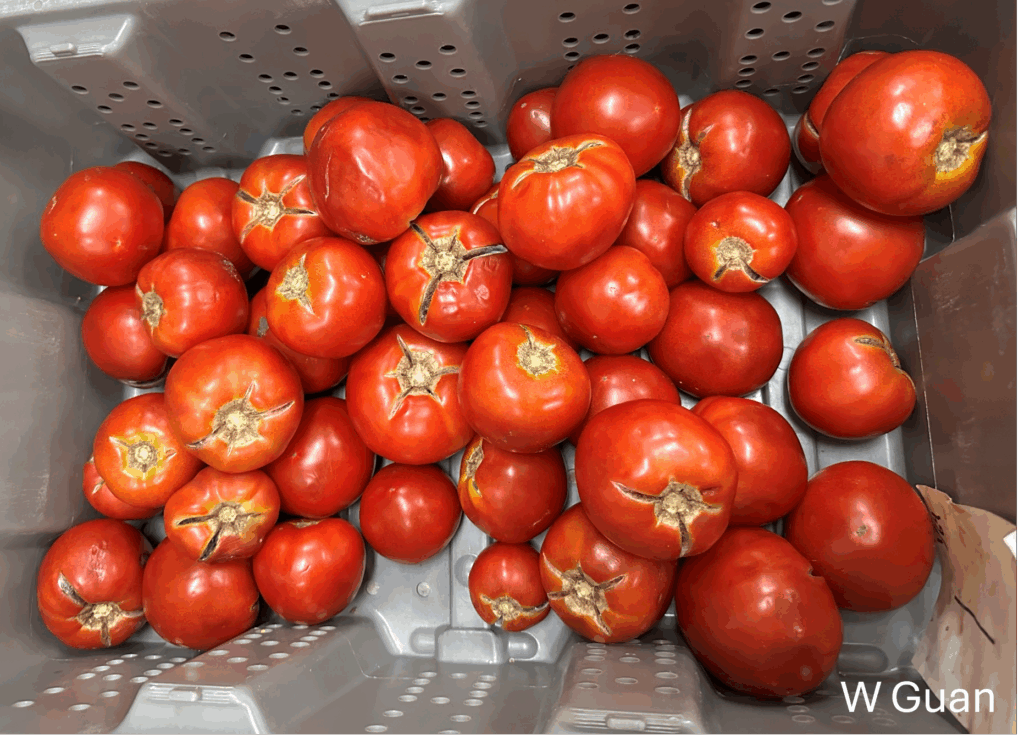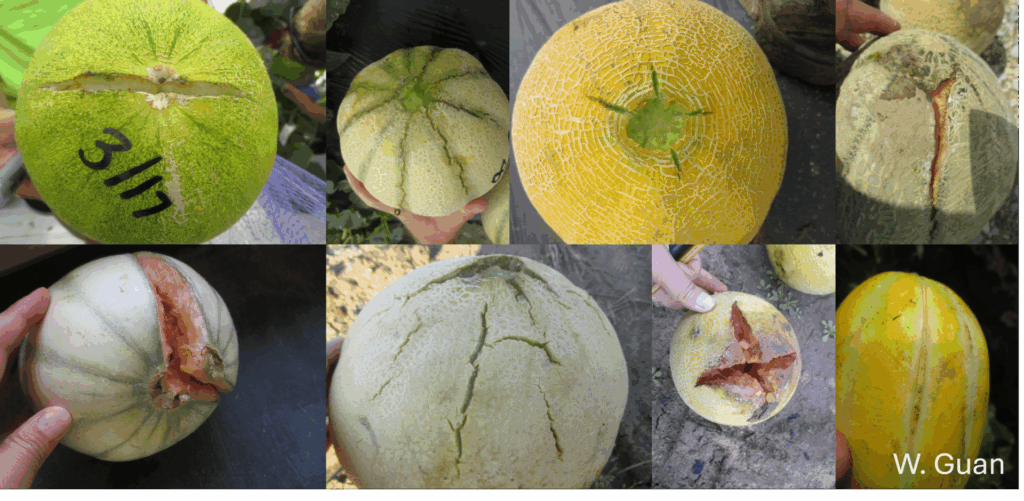Fruit cracking is one of the most commonly observed disorders affecting many fruit crops. Cracking can occur in different forms, such as radial splits extending from the stem end, splits at the blossom end, or concentric rings around the fruit.
Research has shown that multiple factors influence fruit cracking. Some cultivars are more susceptible to cracking than others, pointing to a genetic component in the disorder. With the same variety, the severity of cracking can vary from season to season, highlighting the role of environmental conditions.
Environmental factors commonly associated with fruit cracking include irregular water availability, extreme temperatures, high solar radiation, large fluctuations between day and night temperatures, and elevated humidity levels. Additionally, certain nutrient deficiencies—particularly in boron, potassium, calcium, and zinc—have also been linked to increased fruit cracking.
In this article, I will share a few field observations of tomato and melon cracking and explore the potential contributing factors in each case.
Tomato Cracking
Stem-end cracking (Figure 1) was observed in a high tunnel tomato experiment evaluating eight slicer varieties. The symptoms were minor during mid-season but became more pronounced toward the end of summer. Upon reviewing soil moisture data at the end of the season, we identified over-irrigation as the primary cause of fruit cracking. Soil moisture sensors installed at a 12-inch depth indicated that the soil remained nearly saturated in the latter part of the season.
Irrigation in this high tunnel was managed using a preset automatic system programmed to run three times per day. Early in the season, we gradually increased irrigation to match plant growth and fruit development. However, we did not reduce irrigation as the plants matured and growth slowed. As a result, water continued to be applied at high rates even when the plants required less, likely contributing to excessive fruit cracking during the late season. Among the varieties tested, ’Celebrity Plus’ exhibited the most severe fruit cracking, while ‘STM2255’ and yellow tomato ‘Carolina Gold’ showed the least.
More information about this high tunnel tomato experiment can be found in this experimental report: Evaluation of High Tunnel Tomato Cultivars for Yield and Quality.
Additional information on tomato cracking can be found in a previous newsletter article, Cracking Tomatoes.
Watermelon and Melon Cracking
In our watermelon evaluations, we have occasionally observed fruit splitting after heavy rainfall during the ripening stage in certain cultivars. These split fruits are unmarketable, leading to significant losses. While such issues still occur from time to time, most modern watermelon cultivars exhibit good tolerance to these environmental conditions. Field observations and photos of affected fruit are featured in a previous newsletter article Physiological Disorders after Heavy Rains.
Melon cracking and splitting are commonly observed under our climate conditions (Figure 2). While heavy rainfall and excessive irrigation increase the risk of cracking, we have found that certain cultivars are particularly susceptible to this issue, regardless of the weather conditions. This suggests they may not be well suited for open-field production in our region. Some of the melon types are mentioned in this experimental report: Cantaloupe and Specialty Melon Variety Evaluation in Indiana.
Most melon cracking we have observed typically occurs when the fruit is nearing ripeness. However, we recently encountered a case where a high percentage of fruit from a widely grown cantaloupe cultivar began cracking at an early developmental stage. Although heavy rainfall at the site may have contributed to the issue, plant tissue tests revealed deficiencies in potassium and boron—two nutrients essential for fruit development and known to be associated with cracking. Because most of the fruit had already set, correcting these deficiencies mid-season was unlikely to resolve the problem. This case highlights the importance of a well-balanced fertility plan in supporting the growth of high-quality melons.

